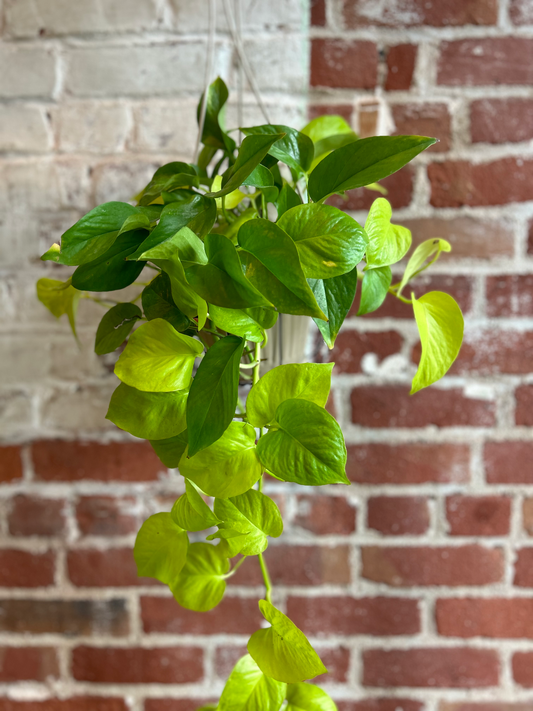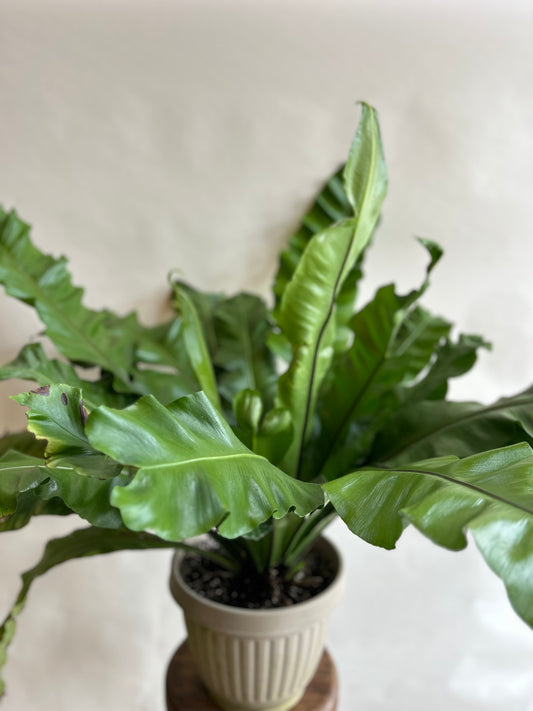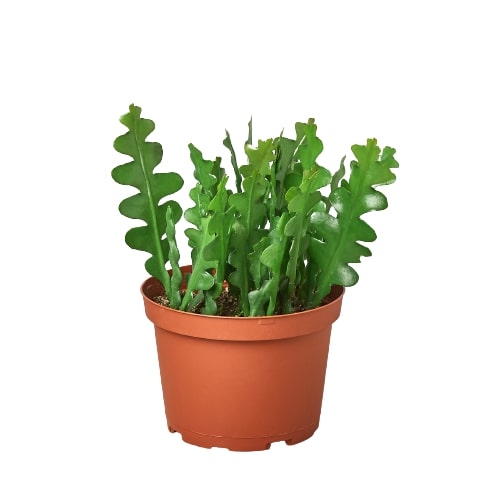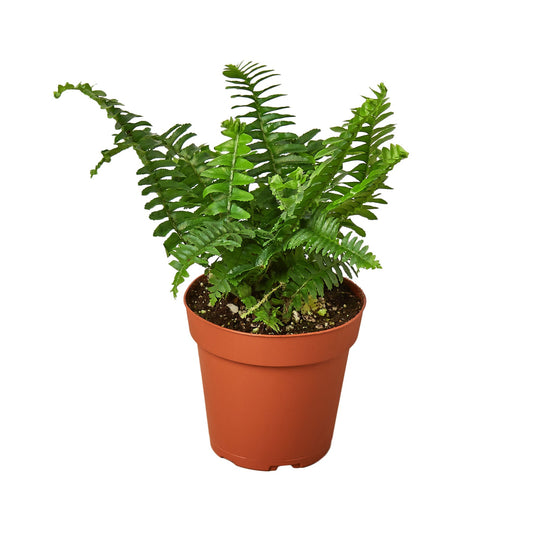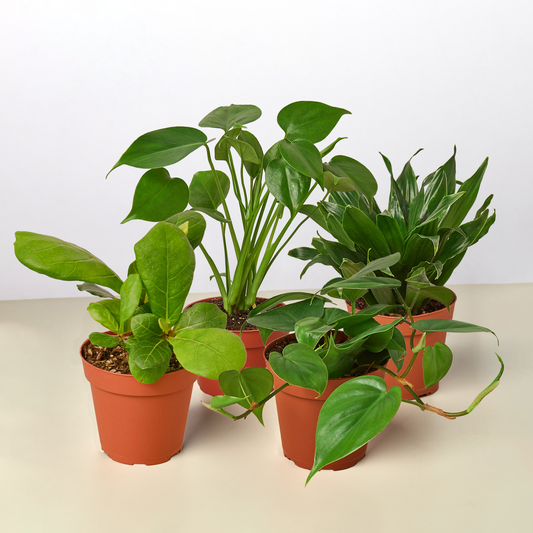What's The Best Pot For a Prayer Plant?
Cafe Planta Team
Prayer plants, with their vibrant foliage and intriguing nightly "praying" movement, are a delightful addition to any home. But, like any plant, they require the right environment to thrive. One often overlooked but crucial aspect of this is choosing the right pot. So, what's the best pot for a prayer plant? Let's explore the ins and outs of this important decision.
In the following sections, we'll cover everything from pot materials and sizes to drainage needs and aesthetic considerations. By the end, you'll have a clear understanding of what your prayer plant needs from its pot, helping you create a happy, healthy home for it.
Understanding Your Prayer Plant's Needs
Before jumping into pot selection, it's important to understand what makes prayer plants tick. These beauties are native to the tropical rainforests of Central and South America, which means they thrive in warm, humid conditions. They tend to grow low to the ground, spreading their wide leaves to capture as much light as possible under the forest canopy.
Their natural habitat tells us a lot about what they need. They love moisture but hate sitting in waterlogged soil. This makes drainage a top priority. Their roots are relatively shallow, so they don't need a particularly deep pot, but they do appreciate enough room to spread out a bit. Understanding these needs will guide us in choosing the perfect pot.
The Importance of Drainage
Prayer plants have a reputation for being a bit fussy about watering. They like their soil to be consistently moist but not soggy. This balance can be tricky to achieve without proper drainage.
- Drainage Holes: The easiest way to ensure good drainage is to use a pot with holes at the bottom. These holes allow excess water to escape, preventing the dreaded root rot.
- Pot Liners: If you have a decorative pot without holes, consider using it as a cover pot. Place your prayer plant in a plastic nursery pot with drainage holes, and then place this inside your decorative pot. Just remember to empty any collected water from the bottom of the decorative pot after watering.
- Soil Composition: Even with the best pot, drainage depends on the right soil mix. A light, well-draining potting mix is essential. Consider adding perlite or orchid bark to improve aeration and drainage.
Without proper drainage, water can collect at the bottom of the pot, leading to root rot and other issues. So, when in doubt, opt for a pot that ensures good drainage.
Choosing the Right Pot Material
The material of your pot can influence how quickly the soil dries out, which is key for keeping your prayer plant happy. Here are a few common materials and how they might affect your plant:
- Terracotta: These pots are porous, allowing moisture to evaporate through the walls, which helps prevent overwatering. However, they can dry out quickly, so you'll need to water more frequently.
- Plastic: Lightweight and often inexpensive, plastic pots retain moisture longer, making them a good choice if you live in a drier climate or tend to forget watering.
- Ceramic: Often glazed, ceramic pots can be both decorative and functional. They retain moisture better than terracotta but can be heavier and more expensive.
Ultimately, the choice of material might come down to your watering habits and the environmental conditions in your home. If you're someone who tends to overwater, terracotta might be your best friend. If you find yourself forgetting to water, plastic could be a better choice.
Finding the Perfect Size
Size matters when it comes to pot selection. Too small, and your prayer plant could become root-bound; too large, and the soil might retain too much moisture, leading to root rot.
- Depth: As mentioned earlier, prayer plants don't have deep roots. A pot that's too deep will have excess soil that retains moisture, increasing the risk of overwatering.
- Width: A wider pot gives the roots room to spread and helps prevent the plant from becoming top-heavy. Generally, you should choose a pot that's 1-2 inches wider in diameter than the current pot or root ball.
A good rule of thumb is to repot your prayer plant every 1-2 years, or when you notice roots growing out of the drainage holes. This ensures that the plant has enough space to grow without becoming cramped.
Aesthetic Considerations
Let's not forget the visual aspect of pot selection. Your prayer plant is a piece of living decor, and the pot should complement its beauty while fitting into your home aesthetic.
- Color: Neutral colors like white, black, or gray can make the vibrant leaves of the prayer plant pop. Alternatively, you might choose a pot that complements the colors in your home or other plants.
- Texture: A matte finish can provide a modern, understated look, while a glazed pot might add a bit of shine and elegance.
- Shape: Consider the lines and shape of the pot. Sleek, straight lines offer a contemporary feel, while rounded or organic shapes can evoke a more relaxed, natural vibe.
While aesthetics are important, they should always come second to the practical needs of the plant. Ensure that your stylish pot also meets the drainage and size requirements of your prayer plant.
Repotting Your Prayer Plant
Once you've selected the perfect pot, repotting your prayer plant is the next step. Here's how to do it without stressing your plant:
- Preparation: Water the plant a day or two before repotting to ensure it's well-hydrated.
- Remove the Plant: Gently remove the plant from its current pot by tipping it sideways and supporting the base. Be careful not to damage the roots.
- Prune if Necessary: If there are any dead or rotting roots, trim them with sterilized scissors.
- Add Soil: Place a layer of fresh potting mix at the bottom of the new pot.
- Position the Plant: Set the plant in the pot, making sure it's centered and at the right height. Fill in with additional soil, pressing gently to remove air pockets.
- Water Thoroughly: Water the plant well, allowing excess to drain out of the bottom. This helps settle the soil around the roots.
After repotting, give your prayer plant some time to adjust to its new home. It might take a couple of weeks for the plant to settle in and resume normal growth.
Common Mistakes to Avoid
Even with the best intentions, it's easy to make mistakes when selecting a pot for your prayer plant. Here are some common pitfalls to watch out for:
- Ignoring Drainage: Skipping drainage holes is a surefire way to end up with root rot. Always prioritize drainage in your pot selection.
- Over-Sizing the Pot: While it might seem like giving your plant extra room to grow is beneficial, too large a pot can hold excess water and lead to root issues.
- Choosing Style Over Function: While style is important, it should never outweigh the functional needs of the plant. Ensure your pot meets the practical requirements before considering aesthetics.
By avoiding these common mistakes, you’ll help ensure your prayer plant remains healthy and vibrant.
Additional Care Tips for Happy Prayer Plants
While pot selection is crucial, there are other care tips to keep your prayer plant thriving:
- Humidity: Prayer plants love humidity, so consider placing a humidifier nearby or setting the pot on a pebble tray with water.
- Light: Bright, indirect light is best. Direct sunlight can scorch the leaves, while too little light can stunt growth.
- Watering: Water when the top inch of soil feels dry, but don’t let the plant sit in water.
By providing the right environment alongside the perfect pot, you'll give your prayer plant everything it needs to flourish.
Final Thoughts
Choosing the best pot for your prayer plant involves considering drainage, material, size, and aesthetics. By understanding these elements, you can create an ideal home for your plant and enjoy its beauty for years to come.
At Cafe Planta, we love sharing our passion for plants and helping you on your plant journey. Whether you’re looking for a new addition to your collection or advice on plant care, we’re here to assist. Feel free to reach out via email or connect with us on Instagram. Let's grow together!


